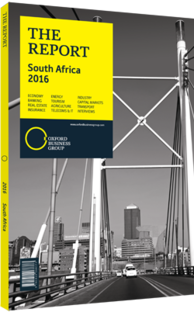Industry stakeholders in South Africa turn to liquefied natural gas to meet growing demand for energy
As South Africa continues to face problems with load-shedding, government and industry stakeholders have turned towards liquefied natural gas (LNG) as a solution to meet demand. The country is also working to generate new capacity from coal-fired and renewable power plants.
Options
In June 2015 the Department of Energy announced that it was receiving preliminary proposals for the development of an LNG import facility. The main purpose of this initiative was to gauge private sector interest (170 expressions of interest were received) for a bundled or unbundled project that would deliver 3126 MW of generation capacity, or 2m tonnes per annum of LNG, by 2020. A bundled project would involve a single power-purchase agreement, likely with Eskom, while an unbundled project would involve separate contracts: one for LNG supply, one for LNG regasification and one for gas-to-power production. There are also a number of other possible mixed options.
Locations
In August 2014, PetroSA announced that a study had found that a floating LNG terminal in Mossel Bay, which would have supplied gas to its gas-to-liquids plant and Eskom’s Gourikwa plant, would be “technically and commercially challenging”, due to meteorological and oceanographic conditions that would increase gas supply costs. PetroSA had estimated the capital costs of the terminal to lie between $375m and $510m.
Alternate locations have since emerged as less challenging options. For instance, as of March 2015 Sasol has been working with Eskom on a possible public-private partnership (PPP) to build a floating LNG import terminal. The three locations being considered are Saldanha Bay, Richards Bay and Coega. Each option has calmer waters than Mossel Bay and is more convenient for transporting natural gas. The PPP model under consideration is thought to resemble the one that Sasol had used in Mozambique in 2004 for the development of its 865-km gas pipeline from a central processing facility in Temane, Mozambique to Secunda, South Africa.
Offset Costs
John Shoobridge, former LNG business development manager at Shell South Africa, stated in November 2014 that the country would be able to recover the capital investment of an LNG import terminal in three to four years, as the cost recovery in using gas instead of diesel at Eskom’s open-cycle gas turbines (OCGTs) in the Western Cape would be substantial. The utility operator’s increasing dependence on diesel to generate electricity at a per unit cost of $0.24 per KWh far exceeds the $0.06 required for coal-generated electricity. According to Shoobridge, “Displacing the current amount of diesel that is being burnt at the OCGTs could save us as much as $100m per year.” Although the diesel generators are built to run three hours in a row and a total of six hours per day, Eskom has run them at some sites for up to 15 hours per day, Eskom spokesperson Khulu Phasiwe told OBG. The government has determined that Eskom must switch from diesel to gas, which would be achieved between 2017 and 2018, he added.
Feedstock
While regional players such as Mozambique and Angola have made natural gas discoveries in recent years, feedstock could come from a number of regions. David Constable, CEO of Sasol, told OBG in March 2015 that the group would likely seek to purchase LNG from the Middle East. With the lifting of sanctions on Iran, Thembisile Majola, the deputy minister of energy, claimed that the government was trying to push the participation of South African companies in Iranian LNG and gas-to-liquids projects. However, over the long term, South Africa could begin to utilise its own natural resources for feedstock by capitalising on recoverable shale gas reserves of 390trn cu feet.
You have reached the limit of premium articles you can view for free.
Choose from the options below to purchase print or digital editions of our Reports. You can also purchase a website subscription giving you unlimited access to all of our Reports online for 12 months.
If you have already purchased this Report or have a website subscription, please login to continue.

